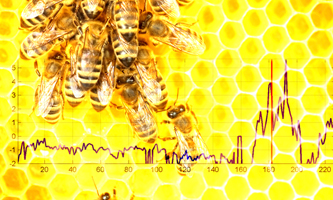Scientists discover honey bee message that could save the species
Scientists have discovered and decoded communications between honey bees that could be used to fight the worrying recent decline in their numbers. A paper published in the journal Computers and Electronics in Agriculture, explains how a research team at Nottingham Trent University has developed a hi-tech method of using accelerometers to detect and translate the vibrations caused by bees as they communicate with one another in a hive.
Over recent years the world’s populations of honey bees have been in decline for reasons that are yet to be fully understood. Disease, bad weather and poor nutrition are all suspected causes, whilst in the USA a phenomenon now known as colony collapse disorder (CCD) has led to the loss of billions of bees. One major factor known to make the situation worse is a hive’s decision to swarm. It’s thought that up to 90% of a modern day hive colony will die after abandoning a hive in search of a new nest location.
Swarming occurs when the queen bee leaves a hive, taking a significant proportion of the colony with her. Beekeepers are able to prevent swarming by removing parts of the hive in which the queen has laid the eggs of successive queen bees. However, this method is by no means foolproof, and requires painstaking monitoring of the hive in order to prevent a swarm occurring and often causing substantial unnecessary disturbance in the colony.
At Nottingham Trent University’s School of Science and Technology, physicists have detected a message used by bees when planning a swarm, up to two weeks before it’s due to occur. By attaching accelerometers – devices that are sensitive to minute vibrations – to a hive, they were able to identify a specific range and amplitude of vibrations that corresponded with swarming. These signals were found to be occurring well in advance of a swarm happening, and their discovery has the potential to dramatically improve beekeeper’s abilities to prevent a swarm taking place and consequently the significant loss of the bee colony.
Dr Martin Bencsik from Nottingham Trent University’s School of Science and Technology, said: “The data we have gathered from our investigations is absolutely fascinating. The application of these devices, and the method we have developed for deciphering the information that they gather could provide a key to slowing the dramatic rate of decline in honey bee populations across the world.”
Source: www.ntu.ac.uk

